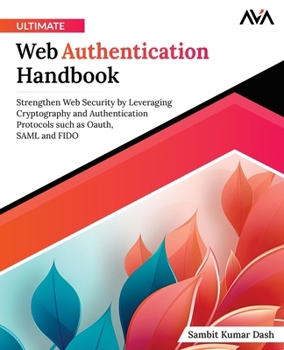Ultimate Web Authentication Handbook
Select Format
Select Condition 
Book Overview
Practical gateway to securing web applications with OIDC, OAuth, SAML, FIDO, and Digital Identity to.
Book Description
In today's digital landscape, web apps evolve rapidly, demanding enhanced security. This Ultimate Web Authentication Handbook offers a comprehensive journey into this realm. Beginning with web authentication basics, it builds a strong foundation. You'll explore cryptography fundamentals, essential for secure authentication. The book delves into the connection between authentication and network security, mastering federated authentication via OAuth and OIDC protocols.
You'll also harness multi-factor authentication's power and stay updated on advanced trends. The book expands on deepening your understanding of Java Web Token (JWT), FIDO 2, WebAuthn, and biometric authentication to fortify web apps against multifaceted threats. Moreover, you'll learn to use Identity and Access Management (IAM) solutions for constructing highly secure systems. Whether you're a developer, security enthusiast, or simply curious about web security, this book unlocks the secrets of secure online interactions.
Table of Contents
1. Introduction to Web Authentication.
2. Fundamentals of Cryptography.
3. Authentication with Network Security.
4. Federated Authentication-I
5. Federated Authentication-II
6. Multifactor Authentication.
7. Advanced Trends in Authentication.
Appendix A: The Go Programming Language Reference.
Appendix B: The Flutter Application Framework.
Appendix C: TLS Certificate Creation.
Index





















